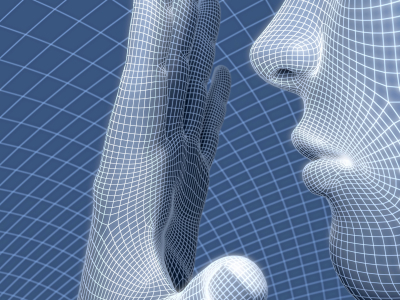Chronic Pain

Pain is Inevitable. Unfortunately, many of us will, at some point during our lifetime, experience significant physical and/or psychological pain. And when pain does arrive, our built-in conditioned response will be to move away from the source of the pain. But what happens if we cannot escape pain? Must our life be filled with abject suffering?
Suffering is Optional. While pain is inevitable, suffering is optional. Suffering only arises when we resist pain. When our resistance to pain is zero, suffering is also zero, no matter the size of the pain. And when resistance fades away to zero, what remains as pain can then be dealt with. When we realize the full impact that resistance plays in dealing with pain, we understand how even small amounts of pain can give rise to tremendous suffering if we are strongly resisting its presence in our life. The good news is that there are methods for dealing with acute and chronic suffering and pain that have been developed and refined over the millenia. Unfortunately, most of us will only discover these resources after exhausting all other avenues of pain relief. iRest, with reference to pain, is a multi-step protocol that entails welcoming pain while relinquishing resistance to it. Paradoxically, suffering ceases, and pain breaks up, and may even completely dissolve, when we stop resisting and trying to avoid or change it, but instead truly welcome pain.
Testimonial from Marci Alegant, a participant at an iRest Yoga Nidra retreat: "I suffer from chronic pain as a result of nerve damage from brain surgery. I am also being treated for anxiety and depression. Since beginning my practice of iRest, I have been almost pain free, and when I have needed medication, it has been much less than before. Anxiety and depression are also markedly improved. I cannot tell you how grateful I am for this. I feel as if I have my life back, and it is actually better than it was pre-brain tumor. I only wanted to say thank you."
Testimonial from Gail F., a Level 2-trained iRest Yoga Nidra teacher: "I had chronic knee pain for twenty years which had been diagnosed as chondromalacia and chondrocalcinosis for the last three years of that twenty years. It prevented me from running or hiking. I had tried to manage it with supplements which were helpful, but the pain kept returning. In June, 2010, after one week of iRest Yoga Nidra I became painfree. I have remained painfree for over a year now. I am grateful that I can hike again."

Welcoming and iRest Welcoming is the fundamental principal underlying the evidence-based approach of Integrative Restoration – iRest. Welcoming entails:
- Ceasing refusing, resisting or trying to change or avoid pain
- Attending to pain by hearing, listening and directly being with it
- Relinquishing the concept ‘pain’; instead experiencing it as a movement of sensation
- Recognizing sensation (the perception of pain) as a movement in awareness
- Experiencing awareness as well-being that is independent of pain
- Perceiving sensation (direct perception of pain), well-being and awareness simultaneously
- Observing and describing the sensation of pain with curiosity, interest and precision
- Recognizing opposites of emotion and belief that are associated with the pain
- Responding with wisdom and right action to the pain
- When pain is truly welcomed, it can miraculously resolve in an instant. But practically speaking, welcoming pain, and its subsequent resolution, takes time, commitment, and practice, patience and perseverance. But the good news is that once the skills encompassed in iRest are acquired, we attain tools for life that work not only for acute and chronic pain, by for all difficult states of body and mind we will encounter during the course of our lifetime.
iRest as a Complimentary Adjunctive Medical (CAM) Approach iRest is a complimentary adjunctive medical (CAM) approach that works in conjunction with any medical regimen or drug-based pain-management system. iRest helps ameliorate pain that medication and other pain-management programs are unable to resolve. And iRest can be used as an adjunctive approach to help reduce or even eliminate the use of pain medications.

Pain as Messenger iRest is not merely an adjunctive approach for resolving pain and suffering. It also respects suffering and pain as important messengers that serve as guides for enhancing our psychological and physical well-being, spiritual awakening and re-connection to all of life. Suffering arises when we separate from right action, when we refuse rather than welcome pain. Pain is our nervous system’s natural response to internal and external events that are calling for our attention. It makes sense, then, that we should listen and welcome messengers of pain and suffering, which are trying to orient us to right action with respect to the internal or external events that are giving rise to the messengers of pain and suffering. When we respond correctly, suffering ceases, pain diminishes or entirely dissolves, and equanimity ensues.
Well-Being Well-being ensues naturally when we live in harmony with the world around and within ourselves. We lose our well-being when we try to get rid of what is arriving (aversion to what is painful), or try to hold onto what is leaving (attachment to what is pleasant). Between these opposites of aversion and attachment lies a third possibility: welcoming what is, which leads to equanimity. Well-being involves non-interference with the natural flow within us of sensation, energy, emotion, thought and joy. It involves giving ourselves radical permission to authentically feel, think respond and express, or not, to each experience and situation we find ourselves in. As such, well-being is the opposite of repression. It brings aliveness to our actions and a genuine sense of joy to our life. When we meet life from the attitude of welcoming, our body, mind and senses assume their proper functioning as responders to, and directors of right perception, wisdom and action. Thus welcoming, and the equanimity that naturally ensues, play critical roles in helping us face the challenge of dealing with chronic pain, as well as with other disorders such as PTSD, anxiety and fear, insomnia, substance abuse, compulsive eating, anger management, etc.

Focused Attention The power of iRest to resolve pain and suffering lies in our ability to focus attention in a desired direction for as long as necessary to attain the desired result. Conceptually, this should be easy for we all possess the ability to focus our mind. But if it’s so easy, why is it in practice, so difficult? It is because we are constantly distracted by our obsession with thinking. Most people cannot sustain their attention in a desired direction for even a few seconds without becoming distracted by random thoughts. The power of iRest rests in its ability to break this addiction to thinking. When you remain undistracted by compulsive thinking, your attention can remain focused much like a penetrating laser beam of light. Even the most difficult circumstance of pain and suffering can be resolved when you possess the ability to remain focused within the pain long enough to see your way through to understanding, wisdom and right action.
Attaining Undistracted Attention iRest offers many strategies for attaining undistracted attention. These include:
- strengthening our intention and developing our inner resources that underscore our need and desire to reduce our pain and suffering
- focusing attention on particular objects such as bodily sensation, the breath or sound
- learning to allow sensations, emotions, thoughts and images to simply come and go, while observing them.
- recognize opposites of sensations, emotions, thoughts and images as changing movements within awareness, and then;
- recognizing awareness as always present amidst these changing, and otherwise distracting, phenomena;
- experiencing the underlying peacefulness and calm of well-being that arises when we rest and abide for periods of time as unchanging awareness;
- learning to welcome everything just as it is and
- recognize our in-built capacity for wisdom and right action in response to what is being welcomed; and
- learning to apply these tools within every circumstance and condition we find ourselves in during and throughout our daily activities.
